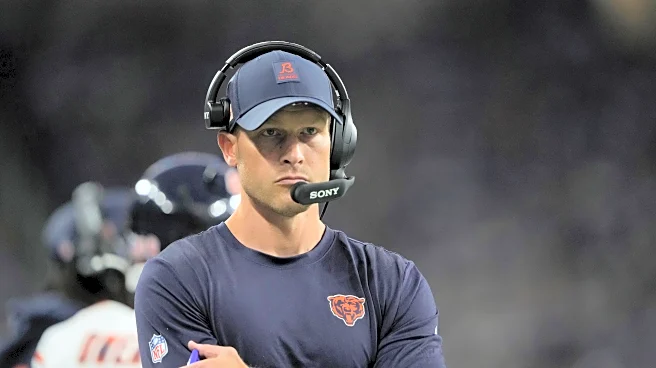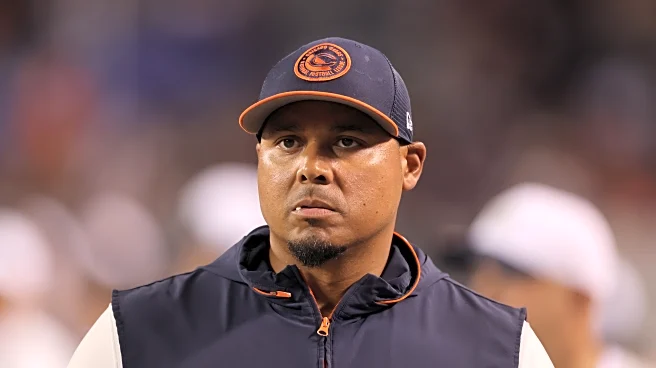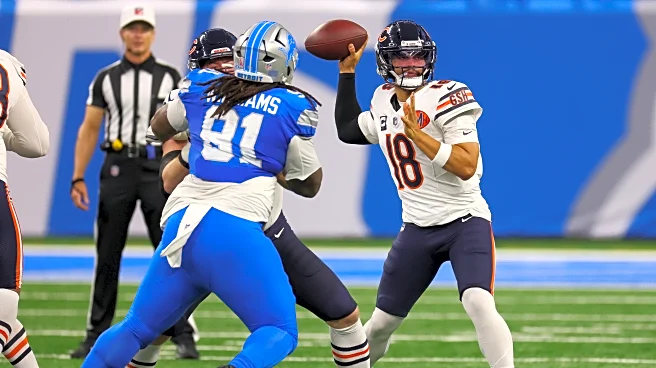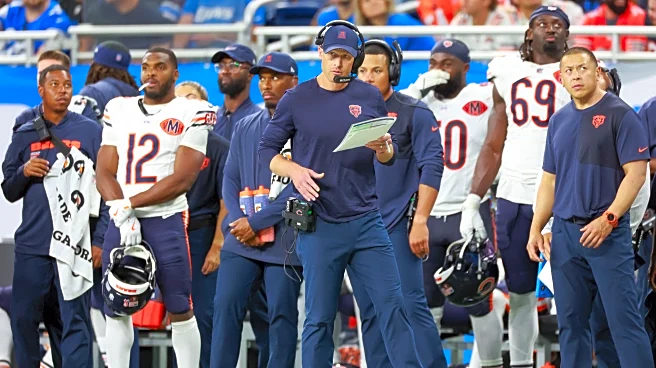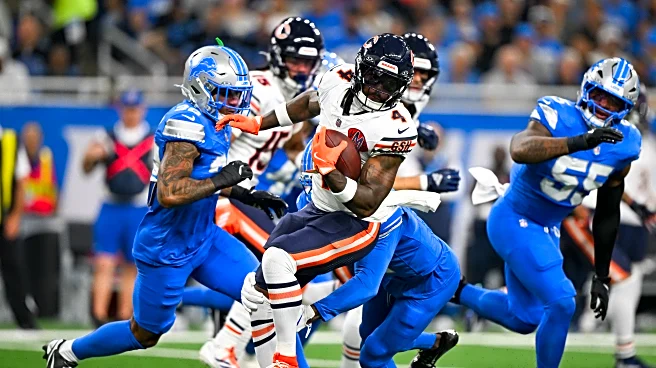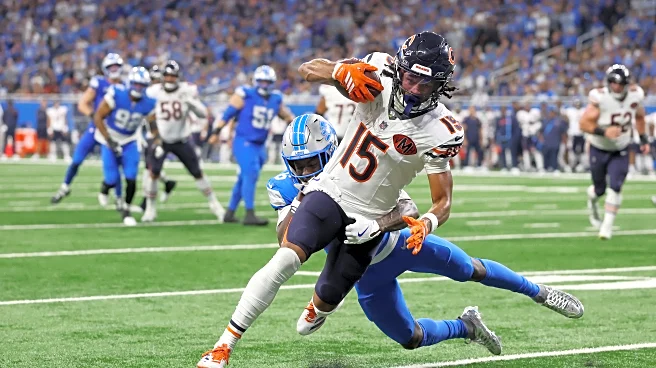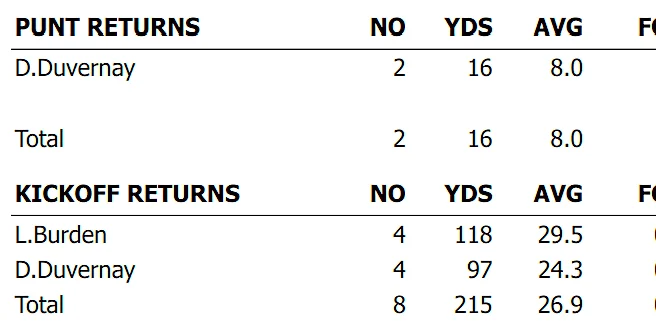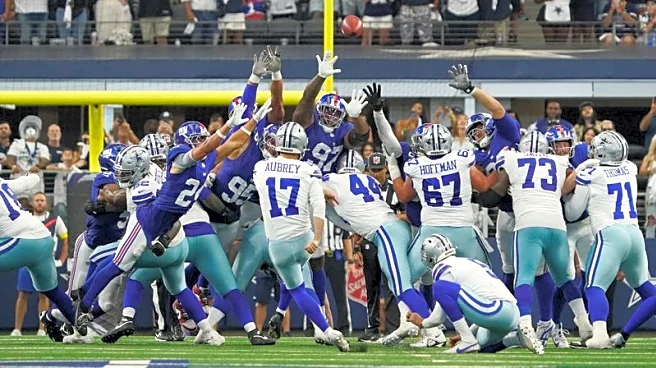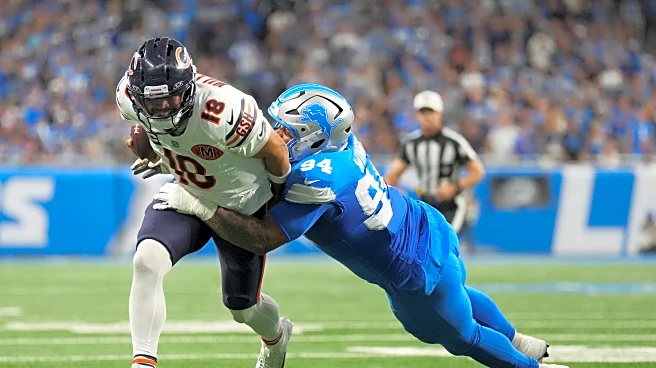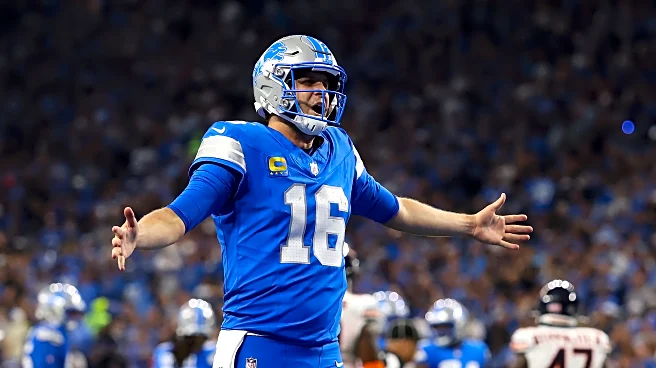Welcome back, brave soul. Just two weeks into the season, hope seems to be heading towards an early hibernation.
Before I dive into my musings about the 52-21 implosion in Detroit, I’m channeling my inner Sean Maguire from Good Will Hunting, and whispering a sincere, “It’s not your fault.” Sure, you masochistically choose pain virtually every week, but the state of your favorite team is not your fault.
The fault rests squarely with the braintrust at 1000 Football Drive. Four-year rebuilds aren’t a thing
in the NFL. Anyone who categorizes the team that way has just found a polite way to say, “we’re still bad.” And I’m likely being polite as putting a four-year horizon on the state of the beloved’s bad-ness.
Alright, back to the lecture at hand. The intent of this series is to leverage film and data to help inform trends and patterns about the team, highlighting positives — yes, there were some despite the outcome — and negatives to find signal among a lot of noise. Which players are progressing in this new regime and scheme? While which pieces are happily collecting paychecks and perpetuating the losing culture?
Let’s get it.
The Good
Rome Odunze is playing like a legitimate No. 1 wide receiver. Through two weeks, Odunze ranks:
- First on the team in targets (20), earning a 27% overall target share,
- First on the team in receptions (13),
- First on the team in receiving yards (165),
- First on the team in air yards (255),
- First on the team in yards after the catch (41),
- First on the team in average depth of target (12.8), and
- First on the team — and tied for the league lead — with three receiving touchdowns.
Odunze’s connection with Caleb Williams is evident and he’s a threat at every level of the field. Head coach Ben Johnson aligned him at multiple spots — split end, flanker and slot — to scheme different coverage matchups. His blocking technique needs to improve. The Bears are asking all of their receivers to contribute as blockers both on the perimeter and on whams against the end man on the line of scrimmage to try and create creases in the run game. But his second-year ascension is in full flight.
Joe Thuney is a force. He’s living up to his reputation and is anchoring a unit with 60% new pieces. “Duo” has become the Bears’ go-to scheme in the run game, which requires double teams at the point of attack. Against the Lions he was stout at the point of attack to secure first-level blocks while making his way to the second-level looking for more work. In pass pro, he has vice grips for hands and can easily re-anchor against bull rushes or laterally mirror.
Caleb Williams took a big step forward against Detroit. Was the interception both a terrible decision and a miscommunication with a receiver — something that’s happened multiple times through two games — in this case, Olamide Zaccheaus? Yes. He must stop making bad plays worse and live to play another down.
But when this game was still in hand in the first half, Williams was operating from the pocket, being decisive with his reads and playing on time. He threw from a firm base with all of his cleats in the turf and was more on target with his ball placement.
One element I would like to see added to the offense is more quick-game concepts. The offense is being run as if the offensive line can protect for three-plus seconds to allow deeper route combinations to materialize. This isn’t matching the reality of the cohesion of the current group as well as the talent on the edge, which, in turn, puts pressure on Williams. Scheme more layups and quick hitters, Ben.
Another area of growth for Williams is his deep-ball accuracy. Through two games, he’s attempted 17 passes of 20-plus air yards (second-most in the NFL), but has completed just four (23.5%). For comparison’s sake, Lamar Jackson has attempted 15 and completed five. Knowing Johnson wants to attack teams deep, this percentage must increase, which comes down to getting on the same page with his receivers as well as mechanical adjustments to put more air under the ball instead of throwing it on a line.
The Bad
When general manager Ryan Poles selected tight end Colston Loveland with the ninth pick this past April, it raised some eyebrows. First off, the team gave Cole Kmet $50M in 2023. Secondly, there’s room to debate if Loveland was even the best prospect at the position, given Penn State tight end Tyler Warren’s stellar productivity.
Two weeks into the season, it’s very apparent the Bears haven’t found a package of plays for Loveland, while Warren is thriving with the Colts. The Bears deployed a lot of 12-personnel packages against the Lions, yet Loveland ended the game with just one target and no catches.
Time is warranted, for sure. But how are there not a small package of plays for Loveland each week? He’s not the blocker Kmet is, so in 12-personnel groupings, he must be a receiving threat. Two catches for 12 yards through two games compared to 11 for 155 for Warren is a rough look for an embattled scouting department.
Piling on, what is the plan for Luther Burden Jr.? Zaccheaus looks like an excellent investment. He’s a willing blocker, a sudden route runner and is a playmaker with the ball in his hands. So, knowing the Bears aren’t going to run four-wide packages, what’s the plan with their second-round pick? A kick returner? All these decisions are really coming to the forefront for a team severely lacking impact players and an overall identity.
Short yardage situations remain a massive challenge for this team. The back-to-back sneaks of Williams that resulted in a turnover on downs continue a bad trend. On the two sneaks, there were bubbles in both A-gaps. On the third-down run, there was literally no defender head up against Thuney, yet Williams chose to run to the right. I’m not sure if this was designed or not, but in that situation, when it’s a sneak, there has to be a check to attack the open area.
Through two games, the Bears have had nine plays in which it was third or fourth down with three or less yards to gain. They’ve converted just two of those downs, ranking 30th in the league. For an offense that is showing an inclination to go for it on fourth, the short-yardage run package needs to be re-assessed.
Running back D’Andre Swift is becoming a target when he’s a part of the protection scheme. Multiple times the Lions used a “green dog” blitz of their interior linebacker Alex Anzalone. This means he was responsible for Swift in coverage, but without him releasing into a route, the Lions gave him the green light to blitz and when he did, he flattened Swift.
The running back room is a massive problem for Poles, but Swift is their guy. Expect teams to send more inside linebacker pressure to attack him moving forward, knowing he’s likely to lose in that scenario and create pressure at Williams’ feet in the pocket.
The Ugly
Tyrique Stephenson. Woof. Let’s take this step-by-step. Poles traded up to draft him — I sincerely urge you to not look at the players drafted after him. Opposing quarterbacks targeting him in coverage this season have a perfect 158.3 passer rating.
In Detroit, he was relentlessly targeted on in-breaking routes by Amon Ra-St Brown to put him in a trail position. His lack of short-area suddenness was exposed at the top of routes, creating easy windows for Jared Goff. With Jaylon Johnson out indefinitely with a groin injury, expect every opponent’s top passing target to feast this season on Stephenson. His press is ineffective and he lacks the recovery speed.
Compounding the problem with Stephenson is the Bears’ pass rush, which exists in name only. Through two games, Dennis Allen’s crew is allowing a whopping 7.1 yards per play, which ranks dead last in the league. Their pressure rate is 29th.
Considering the investments Poles has made in the defensive line via trade (Montez Sweat), free agency (Dayo Odeyingbo, Grady Jarrett, Andrew Billings) and the draft (Gervon Dexter Sr. and now ex-Bear Zacch Pickens) this group is generating no push on their own up front. Allen wants to play man defense. But when the defensive line gets no push and the secondary is riddled with injury and poor performance, this spells disaster for the defense. Expect it to be bombs away for the Cowboys this weekend at Soldier Field.
The Bears rank 28th in the league in penalties (20 total), resulting in 177 yards. Seven of those penalties are pre-snap, primarily false starts from the offensive line. Through two games, the Bears rank 31st in average yards to gain on third down (9.6) ahead of only the Tennessee Titans who are starting a rookie quarterback.
Against the Lions, the Bears faced:
- 2nd and 17
- 2nd and 32
- 3rd and 14
- 1st and 25
- 2nd and 34
- 3rd and 34
- 3rd and 15
Johnson may be an offensive genius, but no playbook has plays for those scenarios. But look on the bright side, they have 15 more games.

